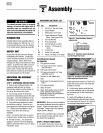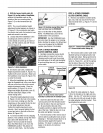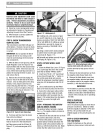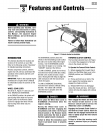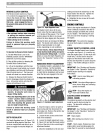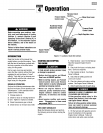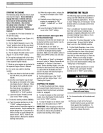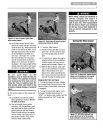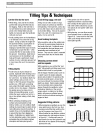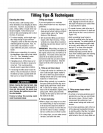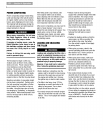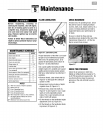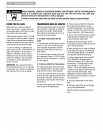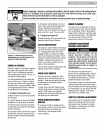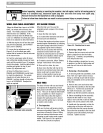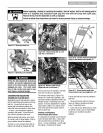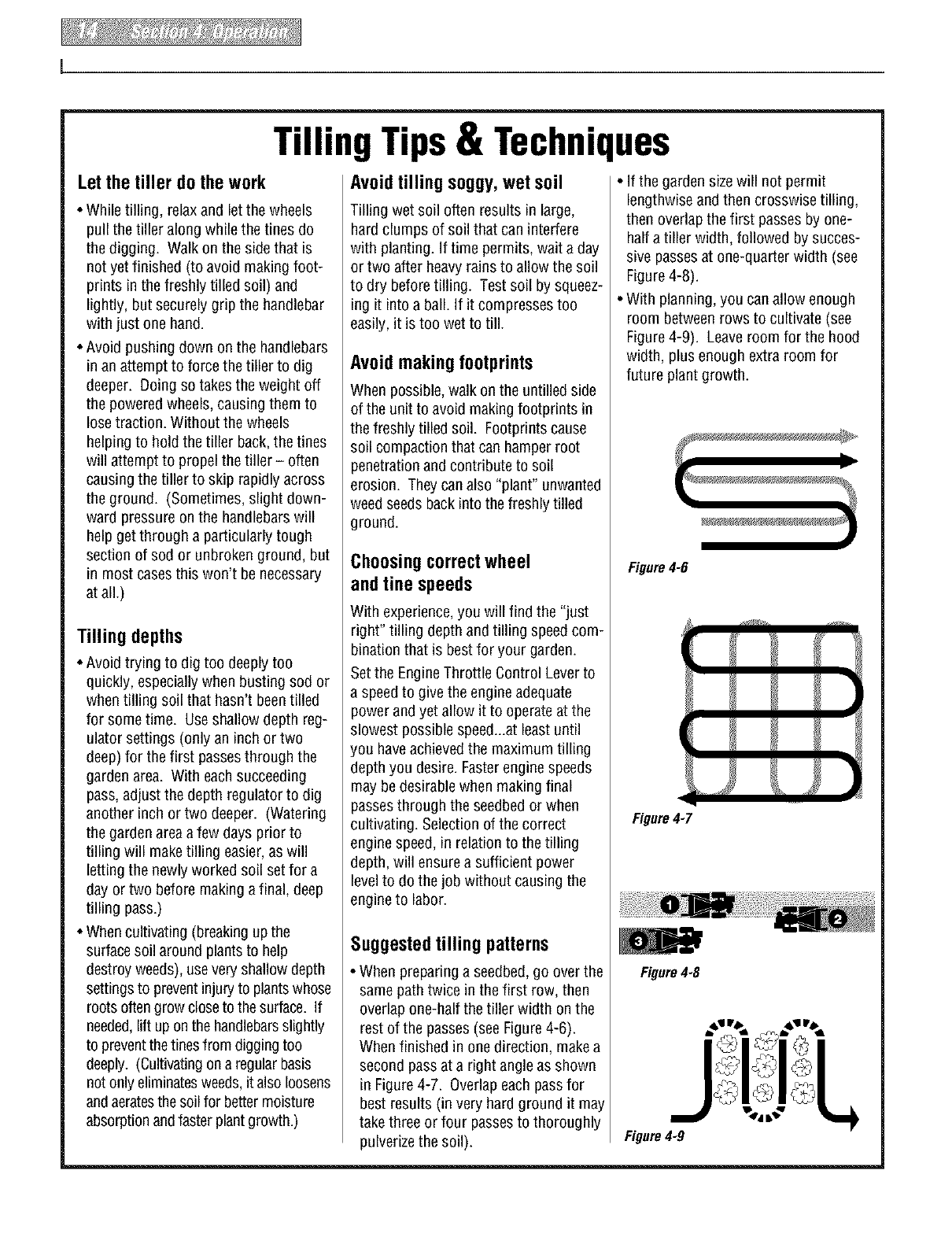
Tilling Tips & Techniques
Letthetiller dothework Avoidtilling soggy,wetsoil • If thegardensizewill not permit
• While tilling, relaxand letthe wheels
pull the tiller along while the tines do
the digging. Walk on the side that is
not yetfinished (to avoid making foot-
prints in the freshly tilled soil) and
lightly, but securelygrip the handlebar
with just one hand.
• Avoid pushing down on the handlebars
in an attempt to forcethe tiller to dig
deeper. Doingso takesthe weight off
the poweredwheels, causing them to
losetraction. Without the wheels
helping to hold thetiller back,the tines
will attempt to propel the tiller- often
causingthe tiller to skip rapidly across
the ground. (Sometimes, slight down-
ward pressure on the handlebarswill
help getthrough a particularly tough
section of sod or unbrokenground, but
in most casesthis won't be necessary
at all.)
Tilling depths
• Avoid trying to dig too deeplytoo
quickly, especiallywhen busting sod or
when tilling soil that hasn't beentilled
for some time. Use shallow depth reg-
ulator settings (only an inch or two
deep)for thefirst passesthrough the
gardenarea. With eachsucceeding
pass,adjust the depth regulatorto dig
another inch or two deeper. (Watering
the garden areaafew days prior to
tilling will maketilling easier,as will
letting the newly worked soil set for a
dayor two before makinga final, deep
tilling pass.)
• Whencultivating (breakingup the
surfacesoil around plantsto help
destroyweeds),usevery shallow depth
settingsto preventinjuryto plantswhose
roots oftengrow closetothesurface. If
needed,lift up onthe handlebarsslightly
to preventthetinesfrom diggingtoo
deeply. (Cultivatingona regularbasis
notonlyeliminatesweeds,it alsoloosens
andaeratesthesoil for bettermoisture
absorptionandfasterplantgrowth.)
Tilling wet soil often results in large,
hard clumps of soil that can interfere
with planting. If time permits, wait a day
or two after heavyrainsto allow the soil
to dry beforetilling. Test soil by squeez-
ing it into a ball. If it compressestoo
easily, it is too wet to till.
Avoidmakingfootprints
When possible,walk on the untilledside
of the unit to avoid makingfootprints in
thefreshly tilled soil. Footprintscause
soil compactionthat canhamperroot
)enetrationand contribute to soil
erosion. Theycanalso "plant" unwanted
weedseeds backinto thefreshly tilled
ground.
Choosingcorrectwheel
andtine speeds
With experience,you will find the "just
right" tilling depth and tilling speedcom-
binationthat is bestfor your garden.
Setthe EngineThrottle ControlLever to
a speedto give the engineadequate
)ower and yet allow it to operateat the
slowest possible speed...atleast until
you haveachievedthe maximum tilling
depth you desire. Fasterengine speeds
may bedesirablewhen making final
)assesthrough the seedbedor when
cultivating. Selection of thecorrect
engine speed, in relation to the tilling
depth, will ensurea sufficient power
levelto do the job without causing the
engine to labor.
Suggestedtilling patterns
• When preparinga seedbed,go overthe
same pathtwice in thefirst row, then
overlapone-half the tiller width on the
rest ofthe passes(see Figure4-6).
Whenfinished in onedirection, makea
second pass ata right angleas shown
in Figure4-7. Overlapeachpassfor
best results (in very hard ground it may
takethree or four passesto thoroughly
pulverizethe soil).
lengthwiseand then crosswisetilling,
then overlapthe first passesby one-
halfa tiller width, followed bysucces-
sive passesat one-quarter width (see
Figure4-8).
• With planning,you canallow enough
room between rows to cultivate (see
Figure4-9). Leaveroom for the hood
width, plusenough extra room for
future plantgrowth.
Figure4-6
Figure4-7
Figure4-8
Figure4-9



